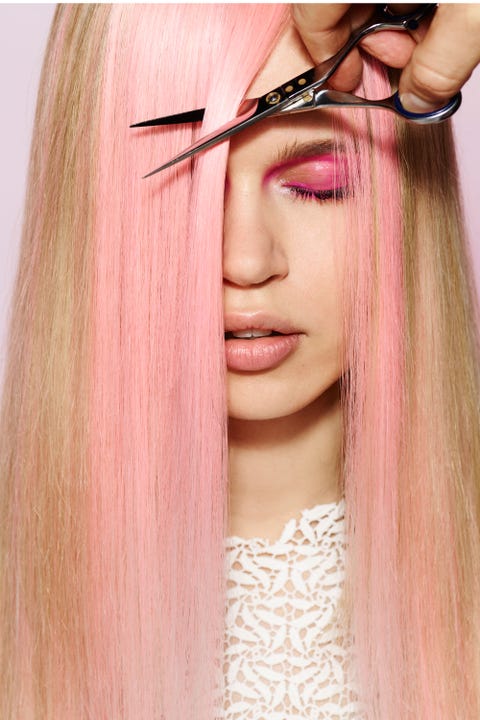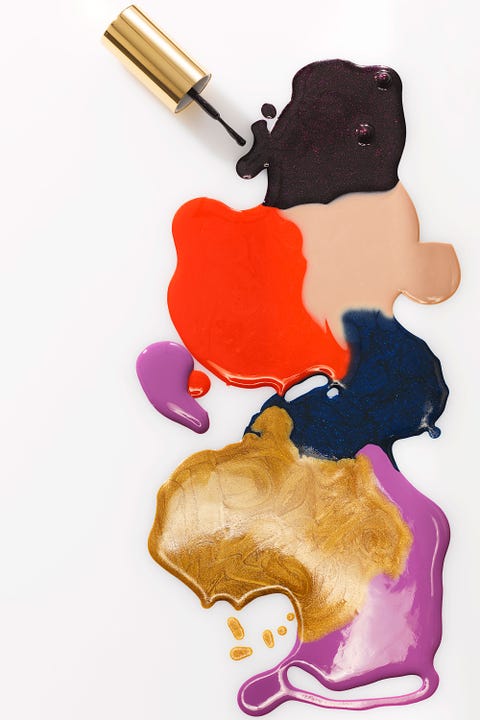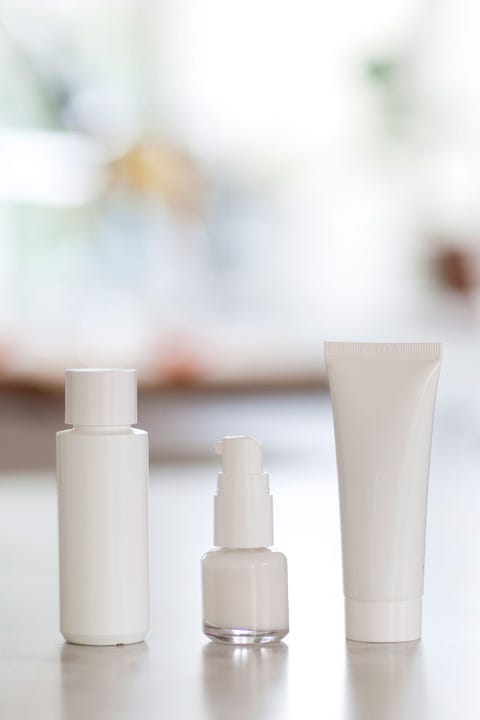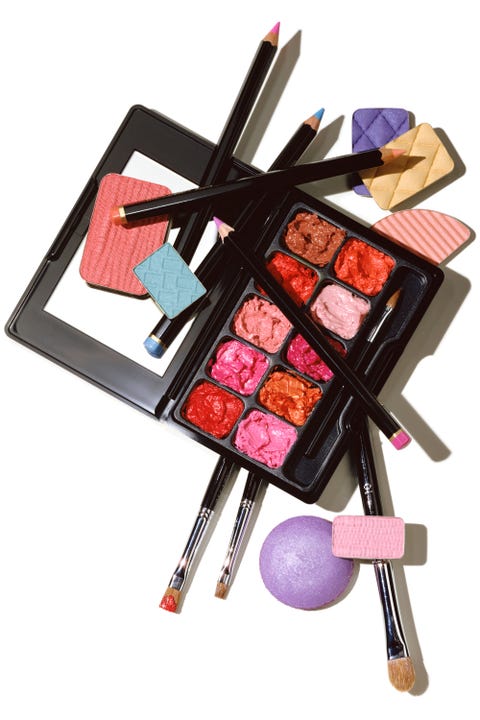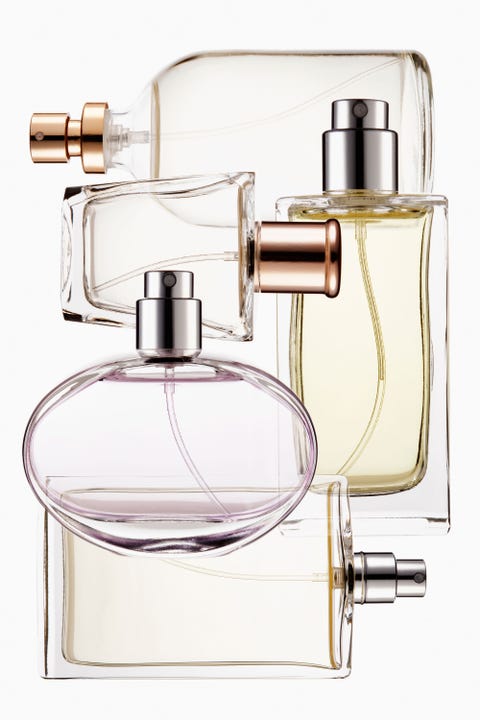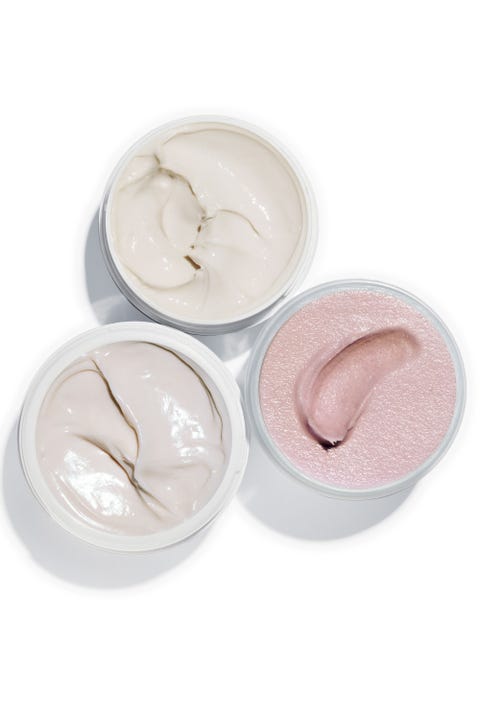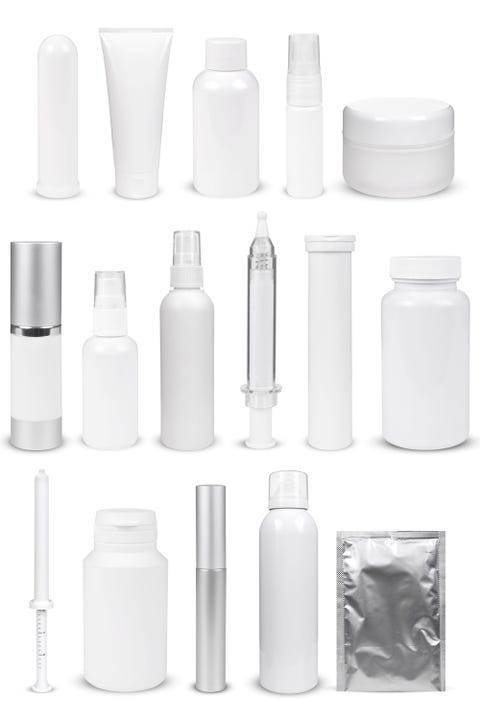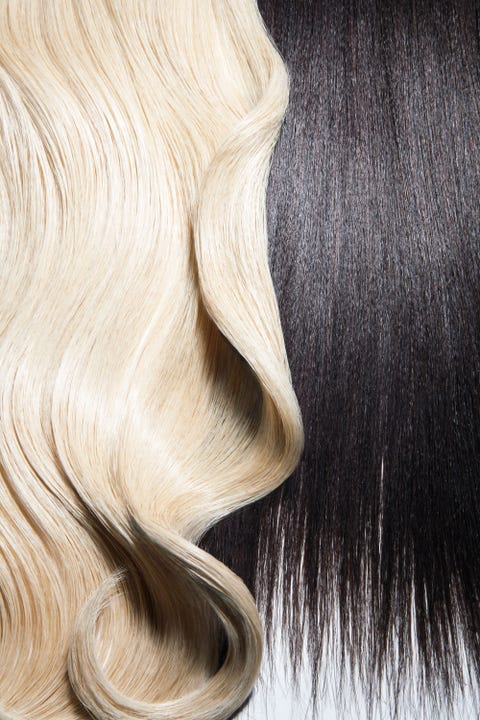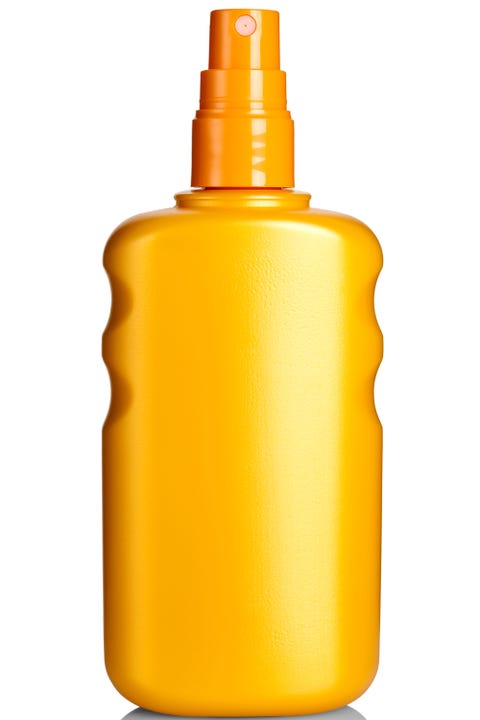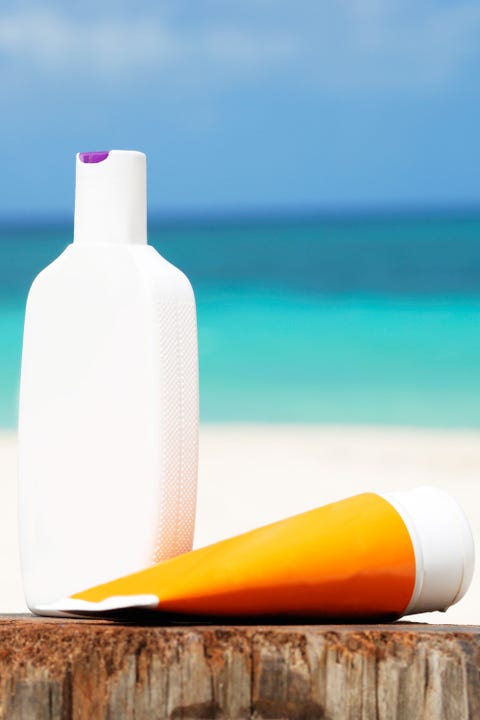Found in: hair straightening treatments, nail polish, and eyelash glue
Why it's sketch: Remember back in 2011 when the Brazilian blowout controversy happened? The brand's straightening treatment claimed to give you frizz-free, poker-straight hair for three months, formaldehyde-free, but then the FDA found that the products contained high levels of formaldehyde, a known carcinogen.
As harmful as it is, formaldehyde hasn't gone away. “Liquid formaldehyde in the bottle turns into gas when treated on hair with a flat iron, getting it in your face and your stylist's,” says Sigurdson. “Formaldehyde is a carcinogen and sensitizer, meaning it causes allergic reaction, and it’s linked to various other health problems.”
Straightening formulas that contain formaldehyde have been recalled or restricted in places like the E.U., Canada, Australia, and even its namesake Brazil, but not in the U.S. And other beauty products that contain formaldehyde and formaldehyde-releasing ingredients are still available here as well as other countries.
On labels, you may see it listed as methylene glycol but remember that professional products don’t have to disclose ingredient lists like over-the-counter (OTC) products do at the store. Two other ingredients to be on the lookout for are formaldehyde-releasing preservatives: diazolidinyl urea, which is typically found in face care and hair care, and quaternium-15, which is typically found in face makeup, especially powders.
Found in: nail polish
Why it's sketch: TPHP makes nail polishes adhere and stay flexible, but it may disrupt hormones in humans, says Sigerdson. A Duke University and Environmental Working Group study found that TPHP-containing polishes trigger signs of exposure in subjects’ urine after being painted on nails. (Researchers actually tested for a diphenyl phosphate or DPHP, which the body produced when it metabolizes TPHP.) Here's how you can tell if your nail salon — and the polishes you're using — are putting you at risk.
Found in: skin care and hair care
Why it's sketch: While petroleum-derived ingredients like mineral oil, paraffin, and petrolatum are the bomb at keeping skin moisturized, “there have been links to cancer and its long-term use is questionable,” says Howard Sobel, New York City dermatologist and founder of the brand DDF Skin Care. “If you put it on once it’s unlikely you’ll get cancer, but for long-term use I do tell my patients to avoid these ingredients.”
So, uh, what about those salon paraffin treatments that leave skin insanely smooth? Sobel recommends keeping the exposure as minimal as possible, but that you shouldn't lose sleep over your once-a-month indulgence at the nail salon.
Found in: skin care, makeup, and hair care
Why it's sketch: Sigurdson cites a Harvard study that connected paraben build-up in the body with reduced fertility, which is part of why this specific long-chain paraben in the paraben family (which are used as preservatives) has been targeted by the Environmental Working Group.
In general, parabens are estrogenic (meaning they have characteristics similar estrogen hormones and can disrupt your body's normal hormonal balance), confirms Wilson, but you should also keep in mind that they are not as estrogenic as, say, the soy in your food. She adds: “A frequently referenced study in Europe found parabens in breast cancer tissue. However, it was not well done.” Experts agree that more research is necessary, but if you're being hyper careful, Sobel suggests avoiding parabens completely and, if you're trying to get pregnant, your man should too.
Found in: perfume, skin care, makeup, and hair care
Why it's sketch: Fragrance — which is not just in perfume but shows up in the majority of beauty products as a listed ingredient all its own — occupies a space in cosmetic chemistry called the “fragrance loophole,” where ingredients can be hidden so as not to give away trade secrets. “When you see ‘fragrance,’ that could be 10 to 100 different chemical ingredients and you don’t know anything about what they are,” say Sigurdson. “Some ingredients found in fragrance, like styrene and phthalates, while it's unclear how common they are, have been linked to endocrine disruption and cancer.”
Found in: facial skin care (brightening and lightening products)
Why it's sketch: "It’s outlawed in Europe and Japan and pretty much everywhere, yet it's still used here,” Sobel says of the ingredient used to lighten skin pigment and spots. “It is cytotoxic, meaning it will kill cells and chromosomes if overused, which can lead to some cancers."
It's just shocking that while mouse studies in Europe revealed a link between heavy use and cancer, the U.S. continues to use hydroquinone at a prescription-only level of 4 percent (to control the exposure to the drug) and at 2 percent, which are available over-the-counter. However, Sobel notes, that the lower-dose OTC versions aren't particularly effective and still pose a risk. "I still recommend avoiding [hydroquinone], no matter the dosage."
Found in: skin care, hair care, nail polish, and plastics
Why it's sketch: This family of ingredients is restricted in the E.U. and has possible links to cancer, says Sobel. And, according to Sigurdson, phthalates have been linked to hormonal disruption in men and women. “There are a lot of studies on phthalates, mostly on animal or in vitro meaning in a test tube or a petri dish, not on humans,” says Wilson. “The conclusion is usually that more studies need to be done.”
Found in: hair dyes that darken
Why it's sketch: "This particular coal tar derivative is associated with very bad allergic reactions and sensitivity,” says Sigurdson. It falls into the ingredient family of coal tars, which were originally derived from coal and now are derived from petroleum.
Found in: Chemical sunscreens
Why it's sketch: "Avobenzone is very unstable and breaks down easily, which some worry may cause free radical damage,” says Wilson. “When they break down, they keep moving and moving so rapidly it can cause a free radical cascade.” Free radicals are destructive molecules that can harm your cells, triggering early aging and, in worst cases, cancer. Most avobenzone-containing sunscreen formulas are designed to minimize this possibility, notes Wilson, and many developed countries (including the U.S.) have restrictions on the amount that can be used.
Found in: chemical sunscreens
Why it's sketch: While oxybenzone is used less and less due to consumer concerns, it is still a common ingredient you can easily find in sunscreens today. “It’s been linked to cancer in mice but not in human beings,” says Sobel. “Some feel that you can't extrapolate what happens in a mouse to a human being.” That said, we do know oxybenzone can penetrate from our skin into our systems. “A test showed that that when it was applied to human skin, it was found in subjects' urine a few hours later, so that did prove it made its way through the body,” says Wilson.
Photos by Getty

